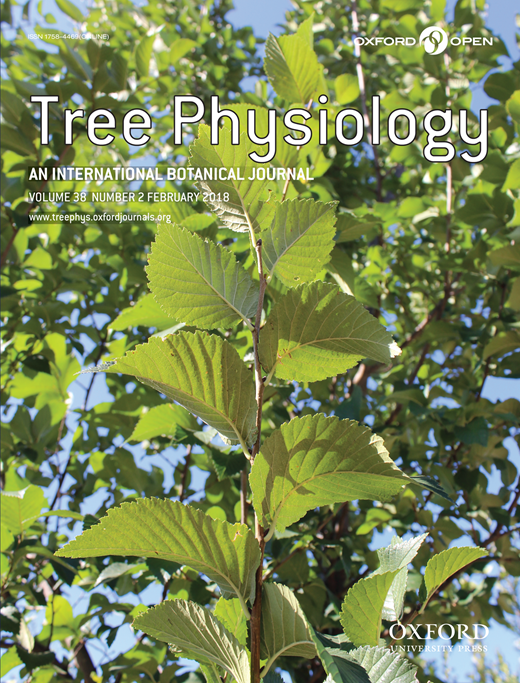Ver ítem
- xmlui.general.dspace_homeCentros Regionales y EEAsCentro Regional Buenos Aires SurEEA BalcarceArtículos científicosxmlui.ArtifactBrowser.ItemViewer.trail
- Inicio
- Centros Regionales y EEAs
- Centro Regional Buenos Aires Sur
- EEA Balcarce
- Artículos científicos
- Ver ítem
Functional relationships between wood structure and vulnerability to xylem cavitation in races of Eucalyptus globulus differing in wood density
Resumen
Wood density can be considered as a measure of the internal wood structure, and it is usually used as a proxy measure of other mechanical and functional traits. Eucalyptus is one of the most important commercial forestry genera worldwide, but the relationship
between wood density and vulnerability to cavitation in this genus has been little studied. The analysis is hampered by, among other
things, its anatomical complexity, so it becomes necessary to
[ver mas...]
Wood density can be considered as a measure of the internal wood structure, and it is usually used as a proxy measure of other mechanical and functional traits. Eucalyptus is one of the most important commercial forestry genera worldwide, but the relationship
between wood density and vulnerability to cavitation in this genus has been little studied. The analysis is hampered by, among other
things, its anatomical complexity, so it becomes necessary to address more complex techniques and analyses to elucidate the way in
which the different anatomical elements are functionally integrated. In this study, vulnerability to cavitation in two races of Eucalyptus
globulus Labill. with different wood density was evaluated through Path analysis, a multivariate method that allows evaluation of
descriptive models of causal relationship between variables. A model relating anatomical variables with wood properties and functional parameters was proposed and tested. We found significant differences in wood basic density and vulnerability to cavitation
between races. The main exogenous variables predicting vulnerability to cavitation were vessel hydraulic diameter and fibre wall fraction.
Fibre wall fraction showed a direct impact on wood basic density and the slope of vulnerability curve, and an indirect and negative
effect over the pressure imposing 50% of conductivity loss (P50) through them. Hydraulic diameter showed a direct negative
effect on P50, but an indirect and positive influence over this variable through wood density on one hand, and through maximum
hydraulic conductivity (ks max) and slope on the other. Our results highlight the complexity of the relationship between xylem efficiency and safety in species with solitary vessels such as Eucalyptus spp., with no evident compromise at the intraspecific level.
[Cerrar]

Autor
Barotto, Antonio José;
Monteoliva, Silvia Estela;
Gyenge, Javier;
Martinez Meier, Alejandro;
Fernandez, María Elena;
Fuente
Tree Physiology 38 (2) : 243-251 (Febrero 2018)
Fecha
2018-02
Editorial
Oxford University Press
ISSN
1758-4469
Formato
pdf
Tipo de documento
artículo
Palabras Claves
Derechos de acceso
Abierto
 Excepto donde se diga explicitamente, este item se publica bajo la siguiente descripción: Creative Commons Attribution-NonCommercial-ShareAlike 2.5 Unported (CC BY-NC-SA 2.5)
Excepto donde se diga explicitamente, este item se publica bajo la siguiente descripción: Creative Commons Attribution-NonCommercial-ShareAlike 2.5 Unported (CC BY-NC-SA 2.5)


